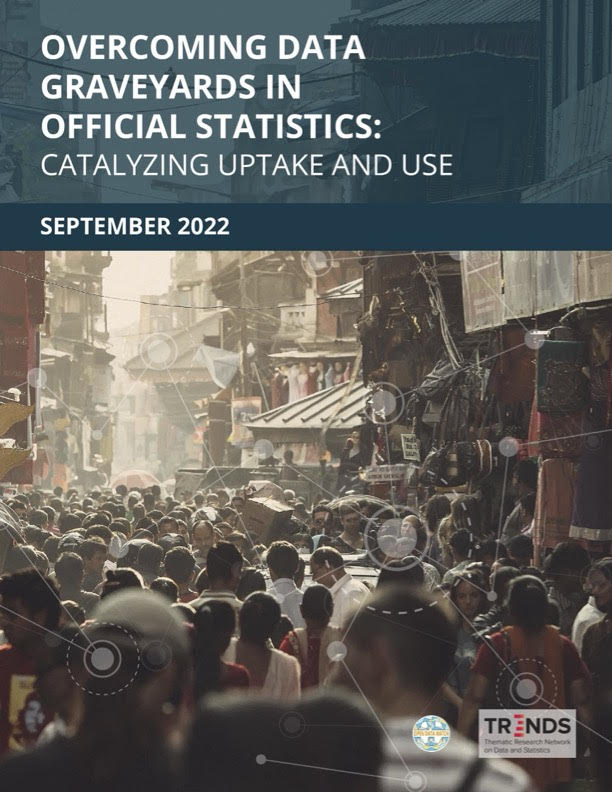SDSN TReNDS
Filters
By Info
•
16 Oct, 2023
As part of its Data For Now work, SDSN TReNDS published a study on marine litter detection and reporting in Ghana using nontraditional data sources. Given the urgency of addressing data gaps on marine plastic litter, timely data, effective stakeholder engagement, cross- sector collaboration, and citizen engagement are critical. The innovative and integrated approach outlined in this report can also support the fulfillment of SDG 14.1.1b (measurement of plastic debris density) as well as inform policy formulation and action plans.
By Info
•
21 Sep, 2023
In its fourth year of implementation, this year’s G7 Partnership for Women’s Digital Financial Inclusion in Africa (G7P) report reflects on the theme of digital safety to advance women’s DFI, provides a progress update on the effectiveness of the partnership, and shares practical steps to improve the G7P’s performance in the final year of implementation.
By Info
•
21 Jul, 2021
The Sustainable Development Goals (SDGs) present an unprecedented monitoring challenge for governments and National Statistical Offices (NSOs). As a result of increasing demands for data from users, declining budgets, and rising data collection costs, interest has grown in harnessing data from new partners in the national “data ecosystem.” The potential for “big data” to support SDG monitoring has incited considerable enthusiasm with many emerging experiences and use cases which underscore the need for increased collaboration and partnership. However, there is poor information-sharing on how partnerships can support national SDG monitoring. This report provides guidance for countries leveraging partnerships to harness big data to support national SDG monitoring. It synthesizes recent experiences from countries that have used partnerships to harness big data, as well as the latest research collaborations that are deriving new, innovative datasets from big data to support SDG monitoring.

By Stephanie Pietras
•
30 Mar, 2021
With the rise of new technologies, the use of non-traditional data sources in recent years has increased exponentially. This report seeks to cultivate a better understanding of the governance factors that improve trust and confidence in the use of non-traditional data sources for official statistical production, with a focus on legal arrangements, quality assurance practices, and policy changes. Drawing on desk review analyses and substantive experience working with National Statistics Offices (NSOs) and entities in the sector, it explores how NSOs in Ghana, Mexico, and the United Kingdom have worked to innovate and instill trust in the use of non-traditional data sources. Using insights from these case studies, the report aims to construct a three-part definition of trust in official statistics derived from non-traditional data sources and proposes a draft analytical framework, with a view towards facilitating future research into the factors that either feed into or detract from trust in non-traditional data use for statistical production.
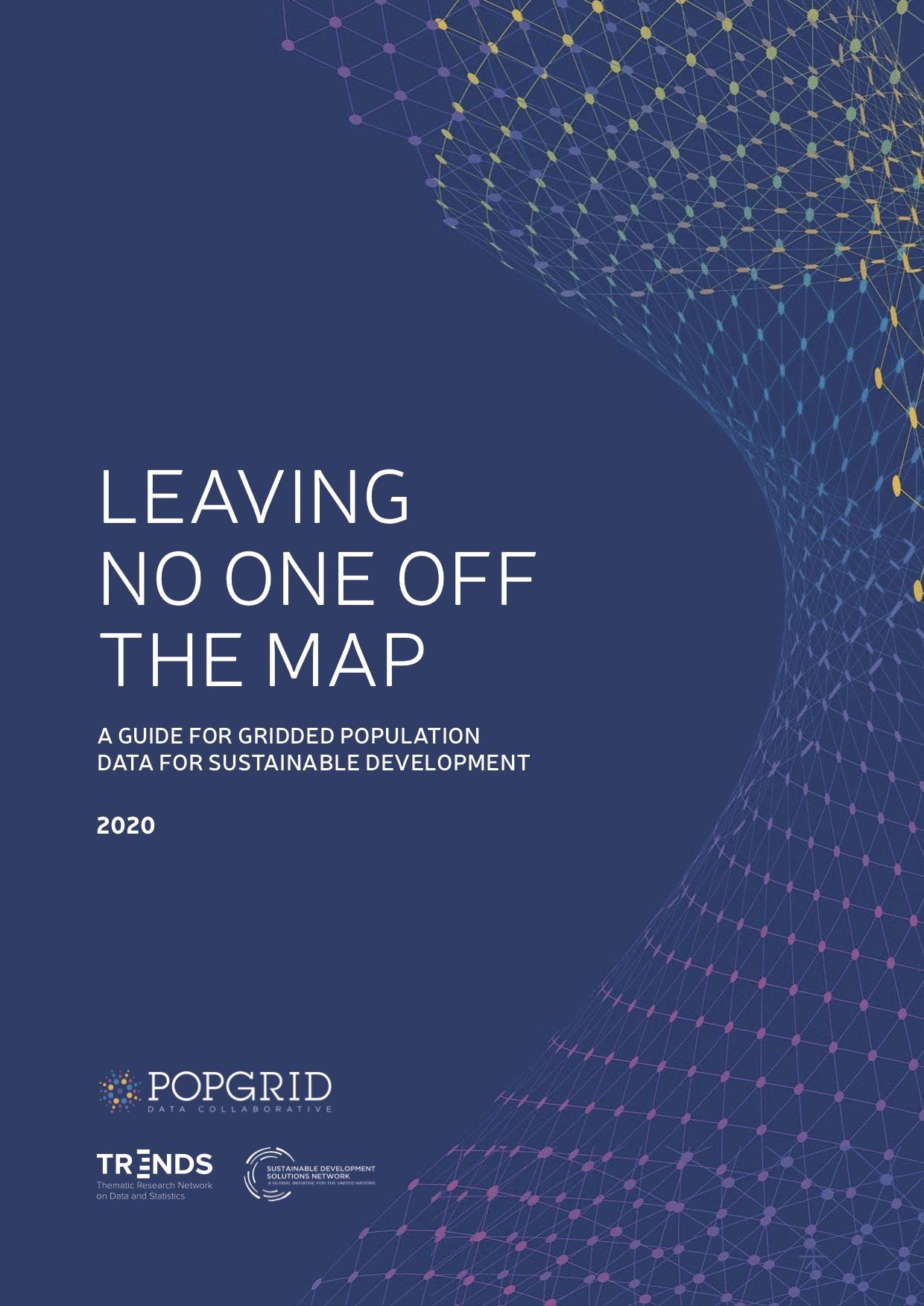
By jay
•
13 May, 2020
Now more than ever, it is essential that we understand where people are located, what conditions they are facing, what infrastructure is available, and what basic services they can access. Fortunately, gridded population data have emerged as an important resource for delivering actionable data in challenging circumstances, including in disaster response and health and infectious disease monitoring. Yet, many decision-makers are still unfamiliar with the nuances of each gridded population data product and may lack the knowledge, time, or technical expertise to assess their strengths and weaknesses for potential application. In this report, we aim to narrow this knowledge gap by presenting an overview, analysis, and recommendations for the use of gridded population datasets in a wide range of application areas. The report also compares seven gridded population datasets from the POPGRID Data Collaborative, presents an intercomparison assessment of the use of different datasets and their varying outputs, addresses misconceptions, and offers nine guiding criteria to aid users in their selection process.
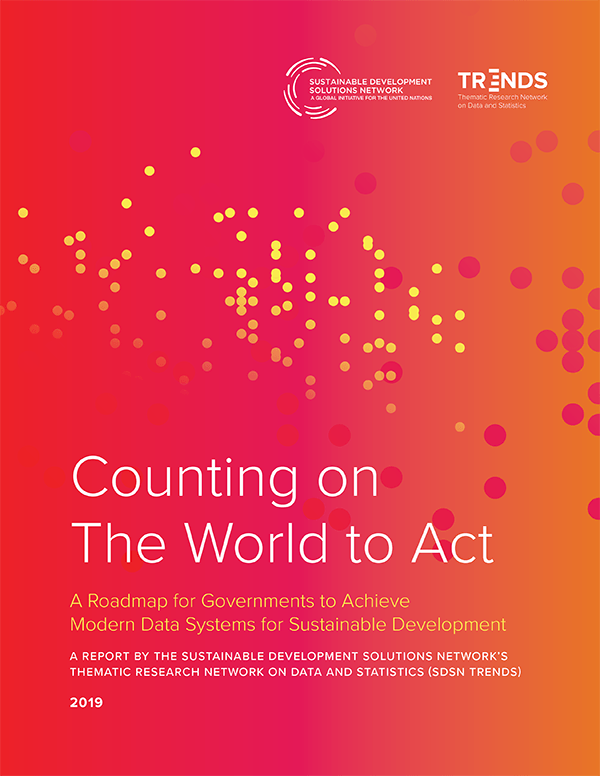
By jay
•
23 Sep, 2019
Eradicating poverty and hunger, ensuring quality education, instituting affordable and clean energy, and more – the Sustainable Development Goals (SDGs) lay out a broad, ambitious vision for our world. But there is one common denominator that cuts across this agenda: data. Without timely, relevant, and disaggregated data, policymakers and their development partners will be unprepared to turn their promises into reality for communities worldwide. With only eleven years left to meet the goals, it is imperative that we focus on building robust, inclusive, and relevant national data systems to support the curation and promotion of better data for sustainable development. In Counting on the World to Act, TReNDS details an action plan for governments and their development partners that will enable them to help deliver the SDGs globally by 2030. Our recommendations specifically aim to empower government actors – whether they be national statisticians, chief data scientists, chief data officers, ministers of planning, or others concerned with evidence in support of sustainable development – to advocate for, build, and lead a new data ecosystem.
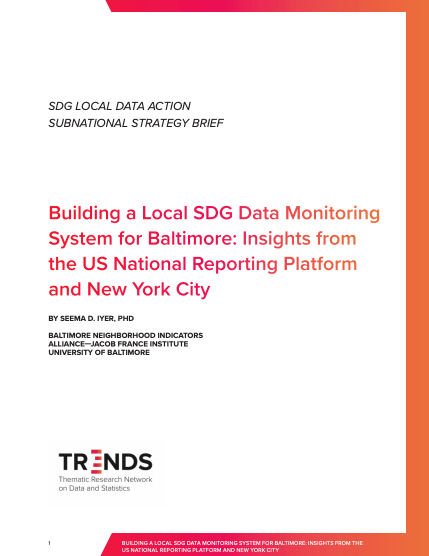
By jay
•
20 Dec, 2017
With the growth of open data portals at the local level, the question for Baltimore and other cities working to localize the SDGS is how feasible (in terms of cost and time) would it be to create a reporting platform that provides real-time, interactive data for stakeholders to locally monitor progress towards achieving the SDGs. In cities with advanced open data portals, like New York City, publishing to the open data portal is also largely dependent on the capacity of each city agency to upload and maintain the data. The National Reporting Platform for the SDGs, which is an open-source website with code available on GitHub for developers to potentially use for local reporting, is a welcomed advance for local jurisdictions to interactively track progress on the Global Goals. This issue brief details the kinds of staffing needs required by a local jurisdiction to both keep the open data portal maintained with relevant data to track SDGs and for the development of a local reporting platform. Ultimately, strong leadership and multi-sector collaboration is required to sustain this level of staffing and project coordination and, more importantly, to convene stakeholders to use the platform to work towards progress and monitoring of the SDGs.
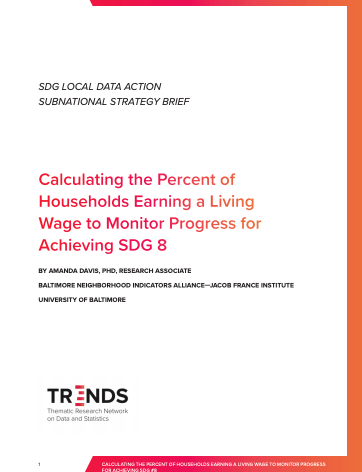
By jay
•
20 Dec, 2017
During the consultative process in Baltimore, stakeholders identified “Percent of Residents Earning a Living Wage” as a relevant indicator to set and track targets for SDG 8 (Decent Work and Economic Growth) in Baltimore. While the political support was there for the increase in the minimum wage, the percent of Baltimore’s population that was earning a living wage – which incorporates the household composition – had not been calculated for the City. Using a living wage methodology established by the Massachusetts Institute of Technology (MIT), the results show that households with two adults were far more likely to earn more than the living wage than households with only one adult. For 1-adult households with children the impacts are even more severe. Only 13% of 1-adult/1-child households earn more than the living wage; only 6.4% of 1-adult/2-children households earned more than the living wage. A key implication of this calculation is that any single minimum wage legislation would actually not achieve a living wage for everyone in all household types in Baltimore. In fact, the analysis shows that access to quality and affordable childcare, particularly for pre-school ages, for all household types would be worth campaigning for in Baltimore. This issue brief provides detailed technical guidelines for other cities to calculate the percent of residents earning a living wage.
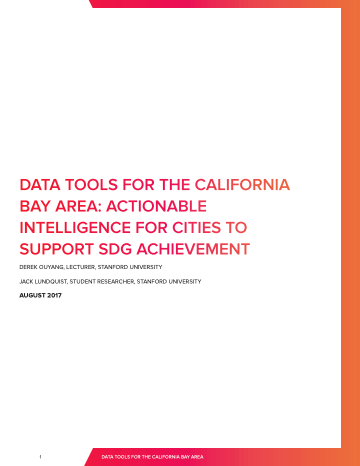
By jay
•
20 Sep, 2017
This Subnational SDG Strategies brief outlines the Stanford Sustainable Urban Systems Team’s preliminary progress in developing indicators for the local reporting platform, temporal and spatial scale comparisons for the data dashboard, and Esri Story Maps for local community groups as part of the marketplace of decision-making tools. The brief also lists strengths, weaknesses, and lessons from Stanford’s process, as well as guidance for data managers, planners, and community stakeholders from other cities to replicate these tools.
SIGN UP FOR SDSN UPDATES
Get our latest insights, opportunities to engage with our networks, and more.
SDSN mobilizes global scientific and technological exertise to promote practical solutions for sustainable development, including the implementation of the Sustainable Development Goals (SGDs) and the Paris Climate Agreement.
Paris
19 rue Bergère
75009 Paris
France
+33 (0) 1 84 86 06 60
New York
475 Riverside Drive
Suite 530
New York NY 10115 USA
+1 (212) 870-3920
Kuala Lumpur
Sunway University
Sunway City Kuala Lumpur
5 Jalan Universiti
Selangor 47500
Malaysia
+60 (3) 7491-8622
Designed by
Northeast Kingdom Online. Powered by
NEKO|360.

